Start/stop signals emerge in nigrostriatal circuits during sequence learning
- PMID: 20651684
- PMCID: PMC3477867
- DOI: 10.1038/nature09263
Start/stop signals emerge in nigrostriatal circuits during sequence learning
Abstract
Learning new action sequences subserves a plethora of different abilities such as escaping a predator, playing the piano, or producing fluent speech. Proper initiation and termination of each action sequence is critical for the organization of behaviour, and is compromised in nigrostriatal disorders like Parkinson's and Huntington's diseases. Using a self-paced operant task in which mice learn to perform a particular sequence of actions to obtain an outcome, we found neural activity in nigrostriatal circuits specifically signalling the initiation or the termination of each action sequence. This start/stop activity emerged during sequence learning, was specific for particular actions, and did not reflect interval timing, movement speed or action value. Furthermore, genetically altering the function of striatal circuits disrupted the development of start/stop activity and selectively impaired sequence learning. These results have important implications for understanding the functional organization of actions and the sequence initiation and termination impairments observed in basal ganglia disorders.
Figures
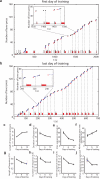
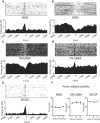
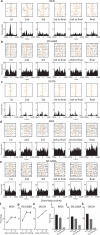
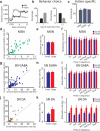
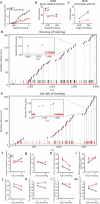
Comment in
-
Neuroscience: Brain's traffic lights.Nature. 2010 Jul 22;466(7305):449. doi: 10.1038/466449a. Nature. 2010. PMID: 20651682 No abstract available.
References
-
- Lashley KS. The problem of serial order in behavior. In: Jeffress LA, editor. In Cerebral Mechanisms in Behavior. John Wiley Press; New York: 1951.
-
- Gallistel CR. The organization of action: A new synthesis. Lawrence Erlbaum Associates, Inc.; Hillsdale, N. J.: 1980.
-
- Grillner S, Wallén P. Central pattern generators for locomotion, with special reference to vertebrates. Annu. Rev. Neurosci. 1985;8:233–261. - PubMed
-
- Marder E, Bucher D. Central pattern generators and the control of rhythmic movements. Curr. Biol. 2001;11:R986–R996. - PubMed
-
- Hikosaka O, et al. Parallel neural networks for learning sequential procedures. Trends Neurosci. 1999;22:464–471. - PubMed
Publication types
MeSH terms
Substances
Grants and funding
LinkOut - more resources
Full Text Sources
Other Literature Sources
Molecular Biology Databases

